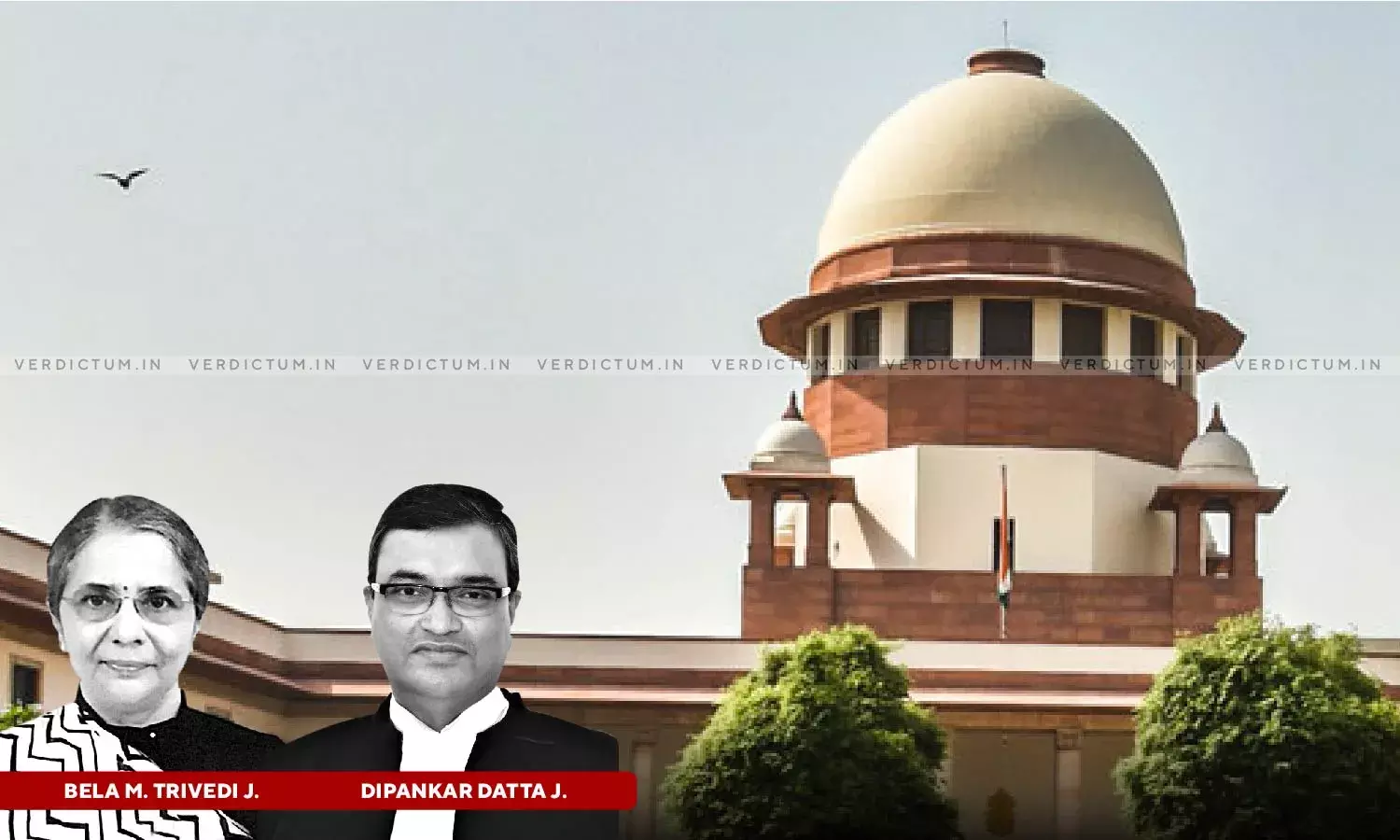Assessment Of Market Value Determined Does Not Warrant Any Interference: SC Dismisses Batch Of 12 Appeals In LA Case
The Supreme Court dismissed a batch of twelve appeals pertaining to the compensation for land acquisition by the Hoshiarpur Improvement Trust finding that the High Court’s assessment and deductions were reasonable and did not warrant its interference through Article 136.
A two-judge Bench of Justice Bela M. Trivedi and Justice Dipankar Datta held that,
“When the impugned judgment of High Court reveals that the High Court has taken into consideration the relevant factors prescribed under the Act, as interpreted by this Court, the assessment of market value so determined does not warrant any interference of this Court in the appeals under Article 136 of the Constitution of India.”
The case involved several appeals arising from a common judgment passed by the Punjab and Haryana High Court. The appeals pertained to the compensation for land acquisition carried out by the Hoshiarpur Improvement Trust for a development scheme. The Trust acquired land through negotiations and notification under the Punjab Town Improvement Act 1922. The Land Acquisition Collector awarded compensation, which was later challenged by landowners. The Reference Court/Tribunal enhanced the compensation, and both landowners and the Improvement Trust appealed to the High Court.
Advocate Yadav Narender Singh appeared for the Petitioners and Advocate R.K. Rathore appeared for the Respondents.
The appellants argued that the High Court overlooked sale deeds for shops executed prior to acquisition, showing a continuous rise in land prices for both commercial and residential purposes. The appellants contended that the High Court wrongly applied a one-third cut on the assessed market value for development charges, even though the acquired land was within municipal limits and had structures on it. The respondents (representatives of the state) argued that a deduction for development charges is standard when acquiring a large chunk of land, which the High Court rightly applied.
The Apex Court had to examine whether the contested judgment justifies the application of its extraordinary jurisdiction under Article 136 of the Constitution of India.
“Undoubtedly, a plenary jurisdiction exercisable on assuming appellate jurisdiction has been conferred upon the Supreme Court under Article 136, nonetheless it is an extraordinary jurisdiction which must be exercised in exceptional circumstances and that too with great care and caution.”
The Court was of the view that principles guiding the determination of land's market value as of the date of the notification under Section 4(1) of the Land Acquisition Act were well established by prior judgments. Assessing market value involved predicting the price a willing seller would offer to a willing buyer in normal market conditions. This wasn't about hurried transactions, facade sales, or fictitious transactions to inflate value. Factors like the land's condition, location, proximity to residential/commercial/industrial areas, etc., all play into this assessment.
In this case, the Tribunal abruptly increased the market rates of acquired lands without thorough analysis, nearly doubling the rates set by the Land Acquisition Collector. The High Court further elevated these rates. The Supreme Court's assessment found the High Court's decision to be reasonable, as it considered various sale instances and evidence while justifying its choices.
The Court stated that regarding deductions for development charges, the High Court's imposition of a one-third cut on the assessed market value was in line with established legal precedent. The Court elaborated that deduction considers the nature of the land, whether it's developed, the purpose of acquisition, and other factors. While it was acknowledged that smaller land values might influence larger land assessments, appropriate deductions were necessary for roads, open spaces, and plotting smaller plots.
The Court placed reliance on Chimanlal Hargovinddas v. Special Land Acquisition Officer, where the Court had emphasized that the extent of deductions for development is context-dependent, varying based on factors such as land shape, size, and location. Another case Lal Chand v. Union of India highlighted the variable nature of development deductions, which can range from 20% to 75%.
Accordingly, the Court dismissed the appeals.
Cause Title: Mala Etc. Etc. & Ors. v. State of Punjab & Anr.
Click here to read/download Judgment












